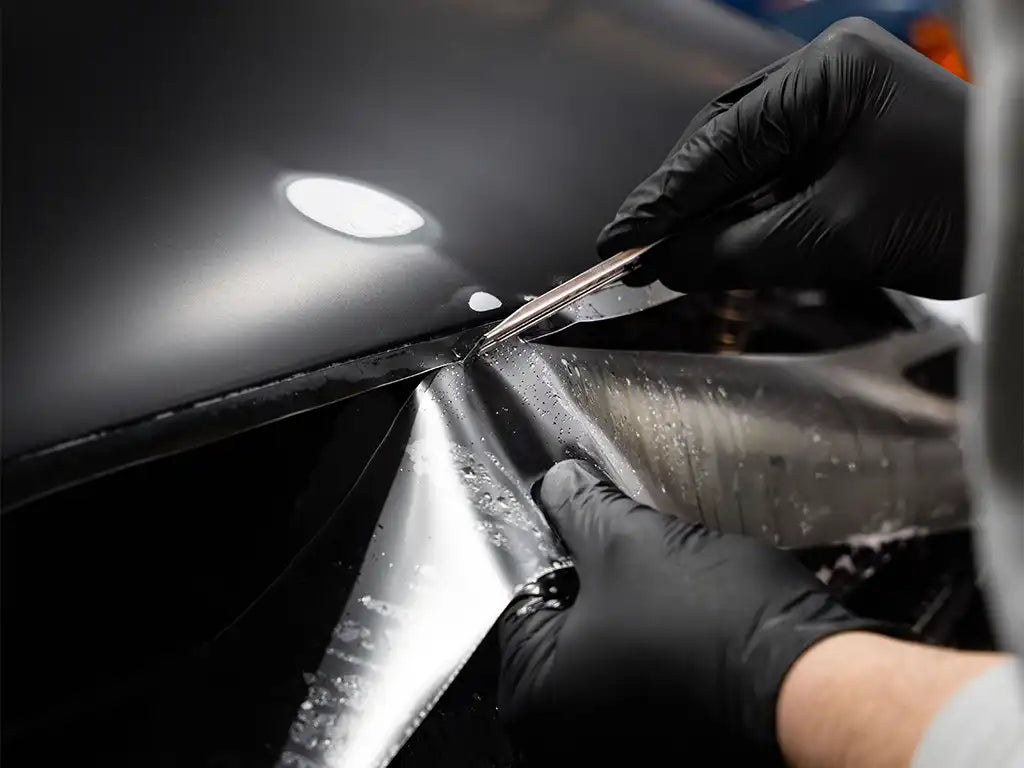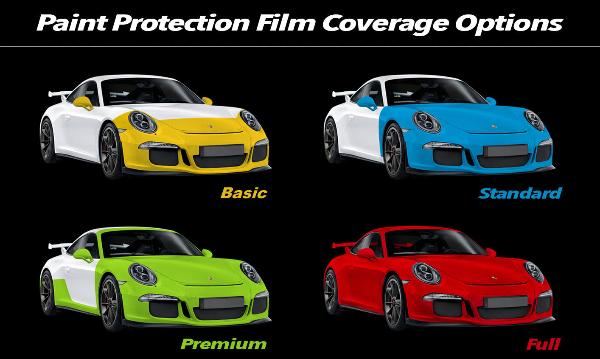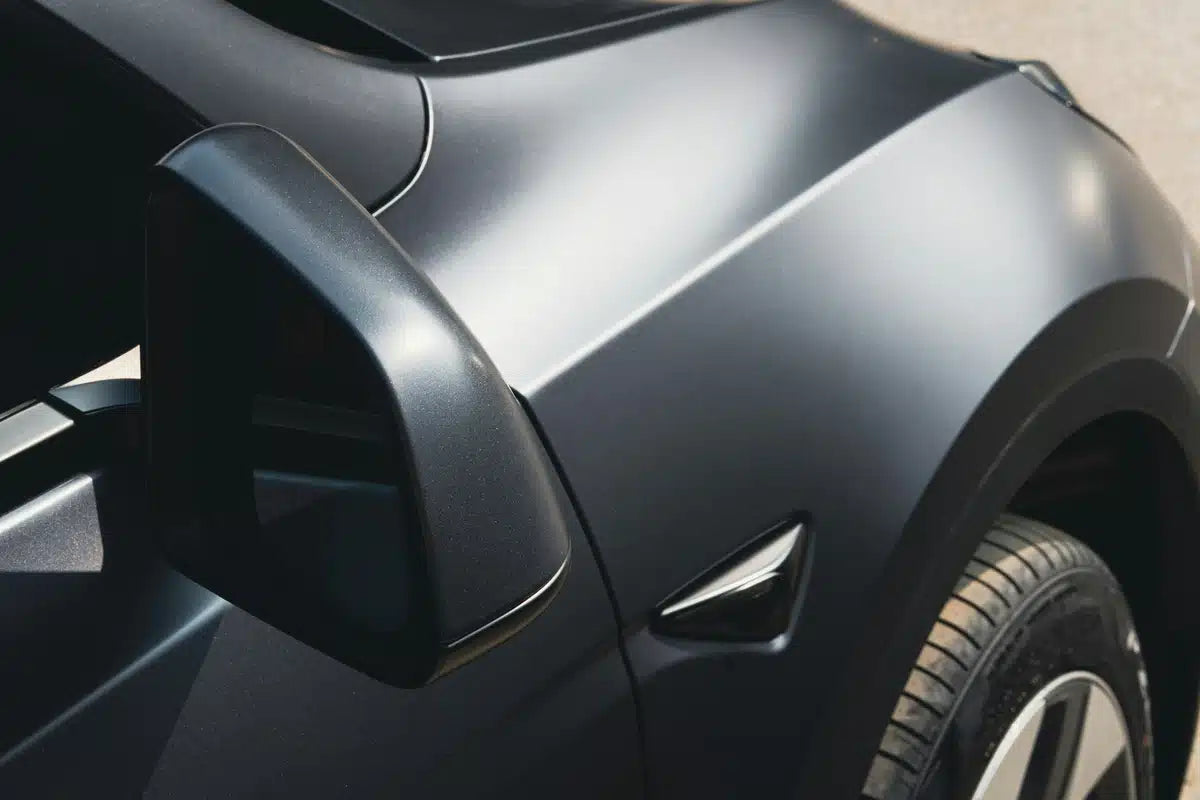What Is Paint Protection Film (PPF)? A Comprehensive Guide
When it comes to preserving your car’s appearance and value, protecting its paint is critical. One of the most effective ways to shield your vehicle from damage is through Paint Protection Film (PPF), often called a "clear bra." This innovative solution has become a must-have for car enthusiasts and everyday drivers alike, offering unmatched protection and durability. But what exactly is PPF, and why is it so popular?
In this blog, we’ll explore the ins and outs of PPF, its benefits, applications, and whether it’s the right choice for your vehicle.
What Is Paint Protection Film (PPF)?
Paint Protection Film is a transparent, thermoplastic urethane film that’s applied to a vehicle’s painted surfaces. Originally developed for military applications to protect helicopter blades, PPF has evolved into a high-tech automotive solution.

PPF acts as a shield, safeguarding your car’s paint from:
- Rock chips
- Scratches
- Bug splatter
- Road debris
- UV rays
Unlike wax or sealants, PPF offers a physical barrier, providing superior protection against environmental hazards.
How Does PPF Work?
PPF works by creating a durable, self-healing layer over your vehicle’s paint. The film is made up of multiple layers, including:
- Topcoat Layer: Resistant to scratches, stains, and UV rays.
- Polyurethane Core: Absorbs impacts and maintains flexibility.
- Adhesive Layer: Ensures a strong bond with the vehicle’s paint while being removable without damage.
One of the standout features of PPF is its self-healing properties. When exposed to heat (e.g., sunlight or a heat gun), minor scratches and swirl marks on the film’s surface disappear, keeping your car looking pristine.
Benefits of Paint Protection Film
1. Unmatched Protection
PPF is the ultimate defense against physical damage, such as rock chips, road debris, and minor abrasions. It’s especially useful for high-impact areas like the front bumper, hood, and side mirrors.
2. Self-Healing Technology
Thanks to its advanced topcoat, PPF can repair itself from minor scratches and scuffs. This self-healing ability ensures your car maintains a flawless finish.
3. Preservation of Paint
PPF protects your vehicle’s factory paint from fading, oxidation, and discoloration caused by UV exposure.
4. Enhanced Aesthetics
Available in both glossy and matte finishes, PPF can enhance your car’s appearance while protecting its surface.
5. Long-Lasting Durability
High-quality PPF can last up to 10 years with proper care, making it a worthwhile investment for long-term protection.

Where Is PPF Applied?
PPF can be applied to virtually any painted surface on your vehicle. Common areas include:
- Front Bumper and Hood: High-impact zones prone to rock chips.
- Side Mirrors and Fenders: Vulnerable to scratches from tight parking spaces.
- Doors and Door Edges: Protection against dings and scuffs from other cars or objects.
- Rear Bumper and Trunk: Ideal for preventing scratches when loading and unloading items.
How Is PPF Installed?
The installation process for PPF is meticulous and requires professional expertise to ensure a seamless application:
- Surface Preparation: The vehicle is thoroughly cleaned and polished to remove any dirt, scratches, or imperfections.
- Custom Cutting: PPF is cut to match the exact shape and dimensions of your vehicle’s panels, often using computer-guided plotters.
- Application: The film is applied using a slip solution, allowing the installer to position it perfectly.
- Smoothing and Bonding: Air bubbles and excess solution are removed using squeegees, ensuring a smooth finish.
- Curing: The film is left to cure for 24–48 hours, allowing the adhesive to fully bond to the paint.
The Pros and Cons of PPF
Pros
- Ultimate Paint Protection: Shields against chips, scratches, and UV damage.
- Self-Healing Properties: Repairs minor surface damage with heat exposure.
- Custom Coverage: Choose partial or full-vehicle coverage based on your needs.
- Increased Resale Value: Keeps your car’s paint in pristine condition, boosting its resale appeal.
Cons
- Cost: PPF is more expensive than other paint protection options, with prices ranging from $500 to $6,000 depending on coverage.
- Professional Installation Required: DIY installation can lead to bubbling, peeling, or improper fit.
- Maintenance: While durable, PPF requires regular cleaning to prevent dirt buildup and discoloration.
- Visible Edges: On darker vehicles, the edges of the film may be noticeable.
Who Should Consider PPF?
PPF is ideal for:
- Highway Drivers: Frequent exposure to road debris and gravel makes PPF invaluable for protecting paint.
- Luxury and Exotic Car Owners: Preserve the value and aesthetics of high-end vehicles.
- Off-Road Enthusiasts: Defend against scratches and scuffs from rugged terrain.
- Everyday Commuters: Extend the life of your vehicle’s paint and maintain a like-new appearance.
PPF vs. Other Paint Protection Options
PPF vs. Ceramic Coating
While both offer paint protection, PPF provides physical defense against impacts, whereas Ceramic Coating focuses on hydrophobic properties and ease of maintenance. Many car owners opt to combine both for ultimate protection and gloss.
PPF vs. Wax and Sealants
PPF is far more durable and long-lasting than traditional waxes or sealants, which require frequent reapplication and provide minimal physical protection.
Maintenance Tips for PPF
- Regular Washing: Use a pH-balanced car shampoo and soft microfiber towels.
- Avoid Harsh Chemicals: Stay away from abrasive cleaners that can damage the film.
- Inspect for Damage: Periodically check for lifting edges or discoloration.
- Protect with Ceramic Coating: Adding a Ceramic Coating on top of PPF can enhance its durability and hydrophobic properties.

Is PPF Worth the Investment?
For those who value their vehicle’s appearance and want the highest level of protection, Paint Protection Film is absolutely worth it. While the upfront cost can be significant, the long-term benefits—such as reduced maintenance, enhanced aesthetics, and protection from costly repairs—make it a smart investment.
Paint Protection Film (PPF) is the gold standard for preserving your vehicle’s paint. With its unparalleled impact resistance, self-healing technology, and long-lasting durability, PPF offers peace of mind for car owners who want to keep their ride looking pristine. Whether you drive a luxury car or a daily commuter, PPF ensures your vehicle is protected against the challenges of the road.
To learn more about PPF or schedule a professional installation, contact your local auto detailing experts today!
-

What Is Paint Protection Film (PPF)? A Comprehe...
Discover the ultimate guide to Paint Protection Film (PPF)! Learn what PPF is, how it protects your car’s paint from rock chips, scratches, and UV damage, and explore its self-healing...
What Is Paint Protection Film (PPF)? A Comprehe...
Discover the ultimate guide to Paint Protection Film (PPF)! Learn what PPF is, how it protects your car’s paint from rock chips, scratches, and UV damage, and explore its self-healing...
-

PPF vs. Ceramic Coating: Understanding the Pros...
Discover the ultimate guide to PPF vs. Ceramic Coating! Learn the pros and cons of Paint Protection Film and Ceramic Coating, from impact resistance and durability to gloss enhancement and...
PPF vs. Ceramic Coating: Understanding the Pros...
Discover the ultimate guide to PPF vs. Ceramic Coating! Learn the pros and cons of Paint Protection Film and Ceramic Coating, from impact resistance and durability to gloss enhancement and...


